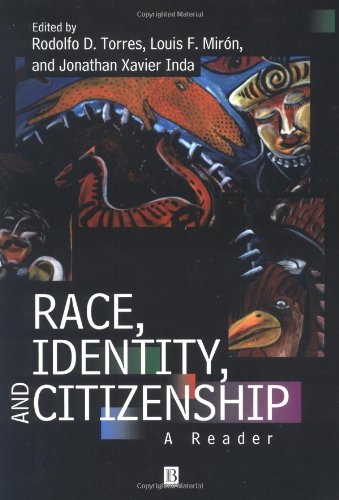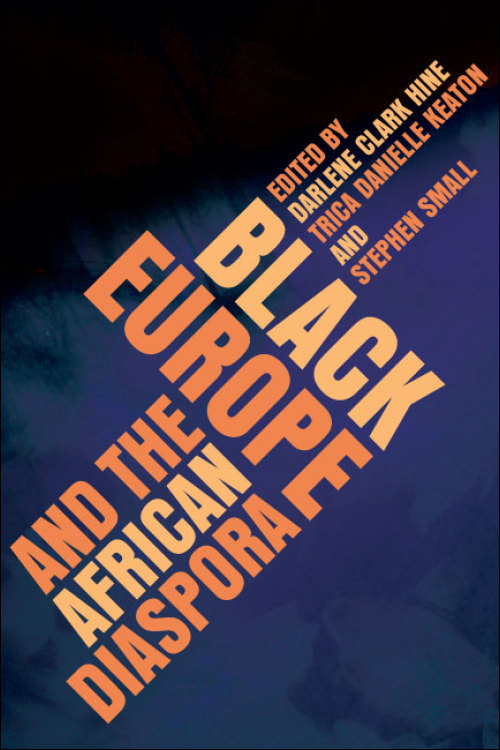The city of Liverpool stands out as an anomaly in the mapping of ‘racialised relations’ and the black experience in England. While it shares a number of continuities with other cities, it reveals several structural and cultural features which are absent or significantly at variance with patterns elsewhere. These include extreme residential segregation, a powerful white local sentiment and insular identity, and extremely virulent ‘racialised’ hostility. In addition, the black population is markedly different in its length of residence, its ethnic and national origins, the proportion of mixed parentage and the frequency of mixed dating and marriages. All of this has occurred in the context of regional deprivation scanning four decades.
The city of Liverpool stands out as an anomaly in the mapping of ‘racialised relations’ in England with regard to a number of structural, cultural and ideological features. The notion of an anomaly employed here refers to aspects of ‘racialised retations’, the black experience and the characteristics of the black population. In most analyses of the black experience in England, black people are correctly seen as immigrants of recent arrival, primarily Caribbean in origin, with the vast majority of families headed by two parents from the Caribbean (Daniel 1968; Smith 1977). These newcomers arrived almost exclusively to take up work in areas and industries with a demand for labour (Patterson 1963; Peach 1968; Rose et al 1969; pero 1971).
These characteristics simply do not apply to Liverpool. In Liverpool the vast majority of black people are indigenous, with many families resident over several generations (MAPG 1980; Liverpool Black Caucus 1986); it is a population which only a small proportion of West Indians, most being of African origin (Gifford 1989); and it is one characterised by frequent inter-dating with the white majority and a high proportion of mixed couples and marriages (Commission for Racial Equality 1989). In addition, the majority of black people in the city are of mixed origins (Gifford et al 1989; Ben-Tovim 1989). Black people did not settle there in response to a demand for labour, and they have never been the beneficiaries of an expanding economy (Caradog Jones 1940; Meegan 1989; Parkinson et al 1989).
But the city is not an island of activity unto itself and it is important to recognise the common features it shares with the black experience elsewhere in the country, in particular, the unrelenting ‘racialised’ discrimination, the confinement of black people to the most disadvantaged positions, and the hostility, indifference or inability of the majority population to combat this discrimination. Whether in employment or in housing, education or health, the private, voluntary or public sector, and in relations with the police, evidence from across the nation indicates that ‘racialised’ disadvantage is entrenched and discrimination continues unabated (Small 1984; Brown and Gay 1985; Smith 1989a; Rooney and McKain 1990; Interim Background Report 1991). The continuing impact of these obstacles has led to the charge of ‘uniquely horrific racism’ in the city (Gifford et al 1989: 82).
Both the continuities and the discontinuities are important and this combination makes it an aberrant case, an analysis of which has many implications for the study of ‘racialised relations’. The former because they underline the futility of analysing specific contexts in a vacuum; the latter because they belie the view that there are general solutions to general problems, reaffirming instead the need to find specific solutions 10 the particular manifestations of problems. The city is also important because of its symbolic significance as the longest standing black community in the country…
In this article I want to indicate why Liverpool is best considered as an anomaly and explain how it became one. I want to use the black experience in the city to make a broader contribution to theorising about ‘racisms’ and ‘race’. In so doing I will relate a story not previously told in full, or widely disseminated, and link this to broader debates on ‘racialised relations’ in England. This will highlight some of the limitations in general theories of ‘racialised relations’ and facilitate an examination of the interplay of local, regional, national and international contexts. The desirability of this has been emphasised in recent studies (Ouseley 1984; Boddy and Fudge 1984; Reeves 1989; Goldsmith 1989; Taylor 1989; Harloe et al 1990; Solomos and Back 1990; Ball and Solomos 1990), although most of the assumptions upon which these theories are based do not apply to Liverpool (Smith 1989b: 156). This is especially relevant as the pattern in Liverpool is suggestive of future developments elsewhere, as the black population becomes increasingly indigenous, socialised in England and young, and as patterns of inter-dating and inter-marriage increase (Brown 1984; Liverpool Black Caucus 1986; Smith 1989a; Ben-Tovim 1989).
All of this will be achieved in an approach that emphasises the ‘racialisation’ problematic (Banton 1977; Miles 1982; Jackson 1987; Small 1990c). I will argue that there is a need for considerable rethinking of theory about ‘racialised relations’. In particular, there is a need for a reassessment of ‘racial harmony’ and ‘racial parity’. This will also help advance our understanding of the interplay of ‘racisms’ and class relations, and emphasise the need to unravel the intricacies of this relationship empirically. I will address two specific omissions from existing analyses of ‘racisms’ and class relations. The first is a failure to extend detailed consideration to the nature and impact of the complex dynamic of ‘racialised’ attitudes and ideologies which help to structure relations between blacks and whites. A prime example of this dynamic is the matrix of meanings associated with inter-dating, and the pejorative category of ‘half-caste‘ in Liverpool (Fleming 1930; King and King 1938; McNeil 1948; Collins 1951, 1955; Richmond 1954; Manley 1955; Rich 1984a; Gifford ei al 1989; Wilson 1989)…
Liverpool’s black population…
…The majority of the black residents in Liverpool are indigenous while the majority of black people elsewhere in the country are immigrants (Brown 1984; Smith 1989a; Gifford et al 1989). Most studies date the establishment of the black community to the 1700s, though no doubt there were black individuals in the city before that date (Law and Henfry 1981; Fryer 1984). Liverpool thus has the longest standing and largest indigenous black population in the country. For the country as a whole, black people are becoming increasingly indigenous, but Liverpool is the only city with a major indigenous black community that dates back several generations. Even Bristol and Cardiff do not match it (Fryer 1984; Ramdin 1987). The best estimates place the population of the city with origins outside England in the region of 20,000 to 30,000 (4-6 per cent of the city) (Gifford et al 1989: 37). Some have estimated it to be closer to 40,000 (8 per cent) (MCRC 1980; Liverpool Black Caucus 1986: 17; Ben-Tovim 1989: 129). These figures include substantial numbers of Chinese, Arabs and Asians…
…The majority of black people elsewhere in the country have no immediate or apparent European origin and are presumed to be of exclusive African origins (in the sense of having two parents that are defined as ‘black’), while in Liverpool they are ‘Black People of Mixed Origins’. Again, it is currently impossible to say precisely how many are of mixed origins, but in Liverpool the notion of ‘British-born black’ is usually taken as synonymous with mixed origins (Commission for Racial Equality 1986; Gifford et al 1989; Ben-Tovim 1989: 129). This provides for a mixed population in Liverpool of between 7,400-11,100. This amounts to 37 per cent of the total population with origins outside England, and well over 50 per cent of the population of African origins (Commission for Racial Equality 1989; Gifford et al 1989: 37). Again, if we compare this with the nation as a whole we find that the population of mixed origins amounts to a far smaller proportion (Brown 1984).
The majority of black people elsewhere in the country live in households in which both parents are black, while Liverpool’s black population reveals a high incidence of mixed cohabitation and marriages. The majority of such families involves a white mother and a father who is black (or ‘Black of Mixed Origins’), The prima facie evidence for this is striking—it is invariably mentioned in all reports about the black presence in the city and is undisputed conventional wisdom—though again pinpointing numbers with any precision is not possible (Fletcher 1930a; MAPG 1980; Commission for Racial Equality 1986, 1989; Ben-Tovim 1989; Gifford et al 1989). This profile is in stark contrast to the other cities in which black people are to be found, and to the general settlement pattern of black people for the country as a whole (Bagley 1972, 1981). For England and Wales, Brown calculates that around 6 per cent of minority households involve mixed cohabitation or mixed marriages (1984: 21)…
…Historical background to the anomaly
Any explanation of the distinctive black experience in Liverpool must be located in the historical unfolding of migration and shipping, slavery and freedom, economics and employment, competition and conflict, and demography. Much of this has everything to do with ‘racisms’ of various kinds as evidenced in the coercion and exploitation of African people, the growth of the city on the basis of the slave trade, and the constraints imposed on its black residents (Clemens 1976; Ramdin 1987). But much of it has little to do with ‘racisms’, and is more directly impacted by broader structural developments, as in the changing balance of world trade, the establishment and growth of the European Economic Community and the vicissitudes of regional policy (Taylor 1989; Meegan 1989).
The slave trade made many in Liverpool prosperous, and forced the first black people there, as well as white slave owners and ideologies (Anstey and Hair 1976; Law and Henfry 1981). Black men outnumbered black women, which led to mixed relationships, inter-marriage and children (Richmond 1966; Rich 1984a, 1986). Shipping with Africa brought many black sailors there, and continues to do so (Lane 1990). The University and Polytechnic developed strength in maritime studies and continued to attract African students…



